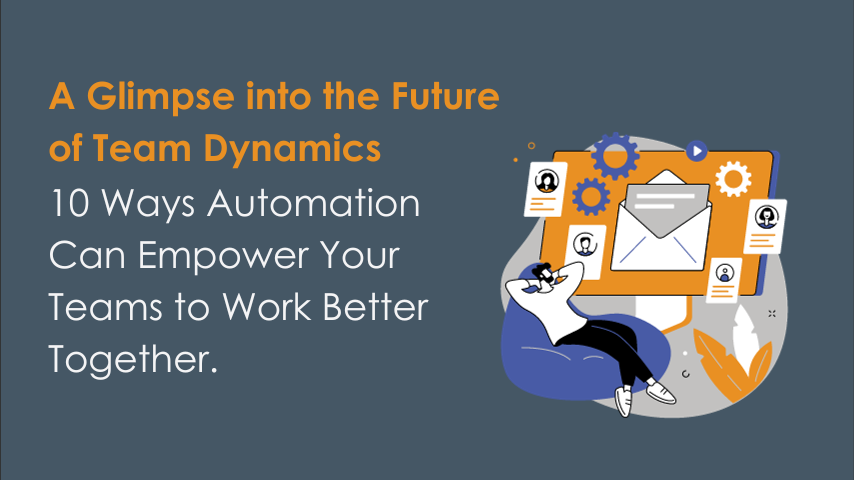In today’s evolving workplace, automation is not just a buzzword—it’s revolutionizing how teams operate and collaborate. Here’s how automation is paving the way for a new era of teamwork.
- Enhanced Collaboration through Smart Platforms
Smart platforms are taking over the mundane aspects of collaboration, allowing team members to concentrate on the work that matters. Tools like Slack and Asana use automation to organize tasks, streamline workflows, and send reminders, ensuring that teams stay on track without getting bogged down by the details.
2. Augmented Decision-Making with Data Analytics
Automated data analytics tools are now indispensable for teams making strategic decisions. These systems can sift through terabytes of data to uncover trends and patterns, empowering teams with previously buried insights in spreadsheets. This allows for sharper, more informed decision-making based on solid data rather than intuition.
3. Virtual Assistants and the Rise of Digital Coworkers
Imagine a team member who never sleeps, eats, or takes breaks. That’s the virtual assistant of today, powered by AI to manage schedules, sort emails, and even draft responses. As these digital coworkers become more advanced, they’ll take on more complex tasks, freeing human team members to focus on innovation and creativity.
4. Streamlined Communication with AI Mediation
Miscommunication can derail any team project. Enter AI mediation, which uses natural language processing to clarify communications and ensure that all team members understand instructions and feedback correctly. It can even suggest the best communication channels and formats for different types of messages, making team interactions as efficient as possible.
5. Customized Learning and Development Paths
Automation in learning and development means that each team member can enjoy a personalized growth path. AI-driven platforms analyze individual performance and suggest courses, workshops, and resources to address specific skill gaps, ensuring the team evolves together.
6. Dynamic Team Structures with Freelance Integration
The gig economy is rising, and automation is making it easier for teams to incorporate freelance talent. Platforms like Upwork and Toptal use algorithms to match project needs with freelancer skills, seamlessly integrating these temporary team members into existing workflows.
7. Automated Conflict Resolution Mechanisms
Automation can now predict and preempt team conflict. AI tools monitor team interactions and can flag potential issues before they escalate. These systems might suggest a mediated discussion or alert a manager to intervene, thereby maintaining team harmony.
8. Predictive Project Management
AI-driven project management tools forecast project timelines and outcomes with startling accuracy. They automate task allocation based on team members’ strengths and availability, and they can even adjust deadlines and resources in real-time in response to project shifts, ensuring that teams work effectively under any circumstances.
9. Real-Time Language Translation and Cultural Mediation
In a globalized world, team members often come from diverse linguistic and cultural backgrounds. Real-time translation tools ensure that everyone is on the same page—literally. Meanwhile, cultural mediation algorithms foster an understanding of different communication styles and social norms, making global collaboration smoother.
10. Automated Wellness Checks and Morale Monitoring
The well-being of team members is paramount for productivity. New tools use sentiment analysis and behavioral cues to gauge morale and suggest interventions. This could be anything from an automated prompt for a team coffee break to a recommendation for workload rebalancing.
Automation is not about replacing human teams but enhancing their capabilities and allowing them to work smarter. As these technologies become more integrated into our working lives, the future of teamwork looks more collaborative, more intuitive, and more productive than ever before.

